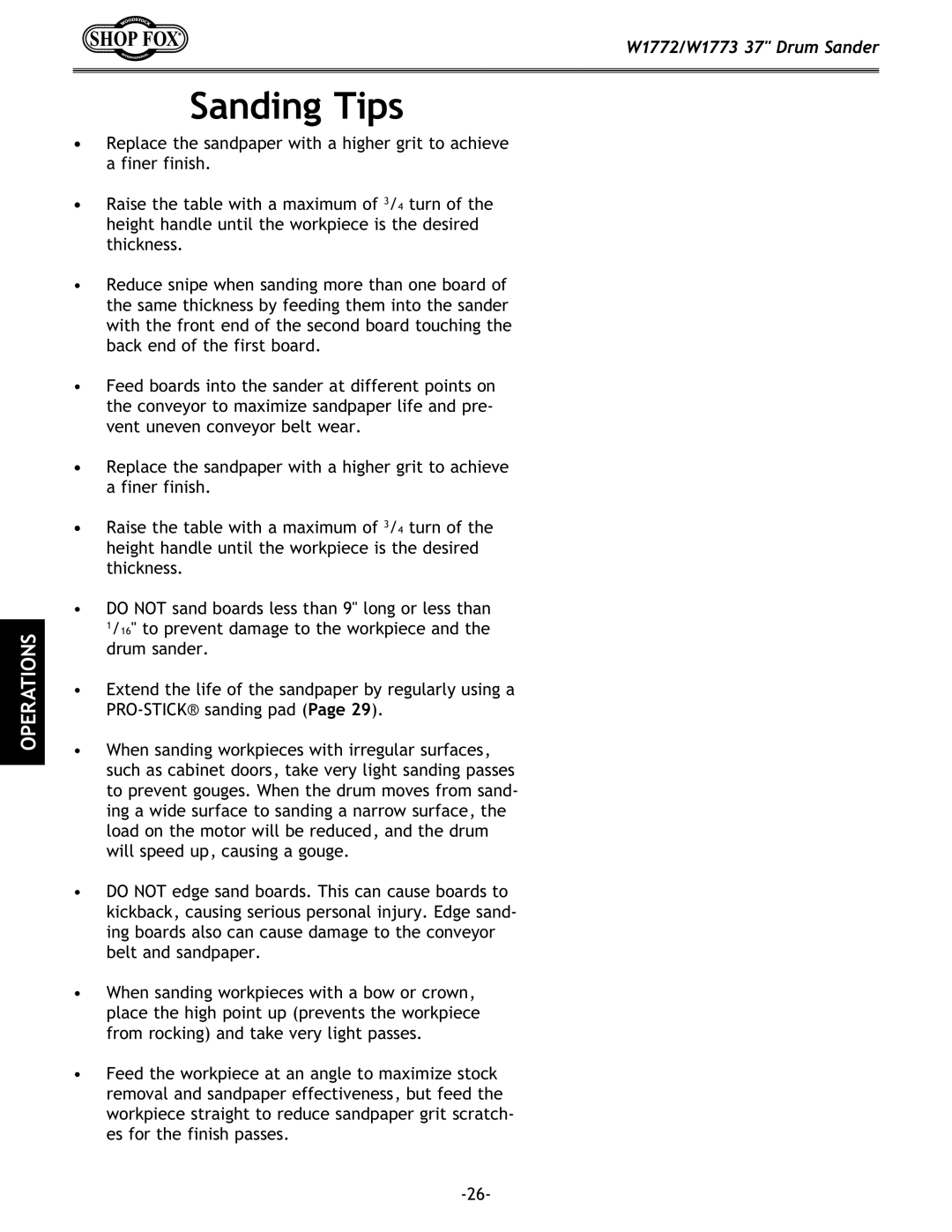
OPERATIONS
W1772/W1773 37" Drum Sander
Sanding Tips
•Replace the sandpaper with a higher grit to achieve a finer finish.
•Raise the table with a maximum of 3/4 turn of the height handle until the workpiece is the desired thickness.
•Reduce snipe when sanding more than one board of the same thickness by feeding them into the sander with the front end of the second board touching the back end of the first board.
•Feed boards into the sander at different points on the conveyor to maximize sandpaper life and pre- vent uneven conveyor belt wear.
•Replace the sandpaper with a higher grit to achieve a finer finish.
•Raise the table with a maximum of 3/4 turn of the height handle until the workpiece is the desired thickness.
•DO NOT sand boards less than 9" long or less than 1/16" to prevent damage to the workpiece and the drum sander.
•Extend the life of the sandpaper by regularly using a
•When sanding workpieces with irregular surfaces, such as cabinet doors, take very light sanding passes to prevent gouges. When the drum moves from sand- ing a wide surface to sanding a narrow surface, the load on the motor will be reduced, and the drum will speed up, causing a gouge.
•DO NOT edge sand boards. This can cause boards to kickback, causing serious personal injury. Edge sand- ing boards also can cause damage to the conveyor belt and sandpaper.
•When sanding workpieces with a bow or crown, place the high point up (prevents the workpiece from rocking) and take very light passes.
•Feed the workpiece at an angle to maximize stock removal and sandpaper effectiveness, but feed the workpiece straight to reduce sandpaper grit scratch- es for the finish passes.
